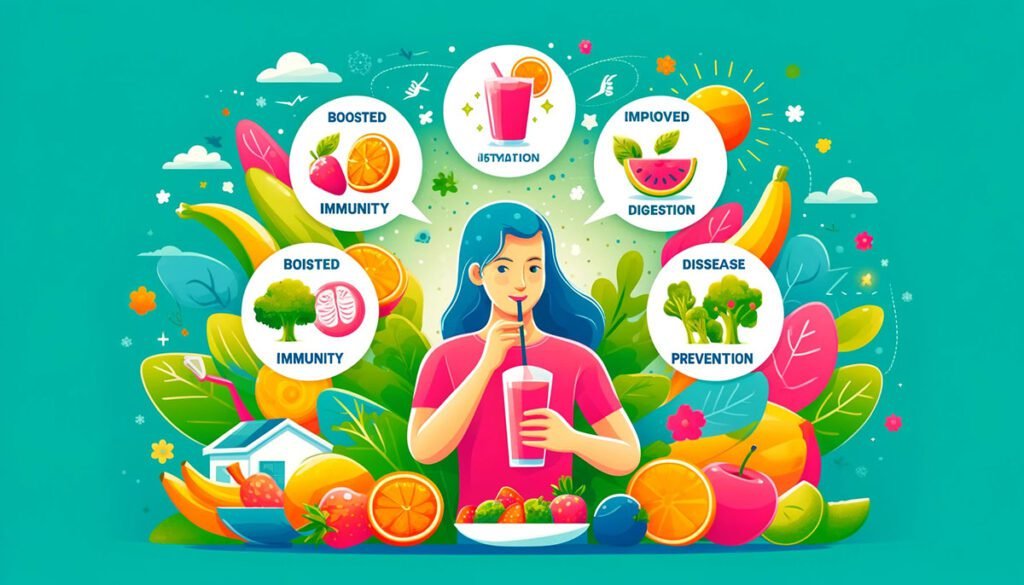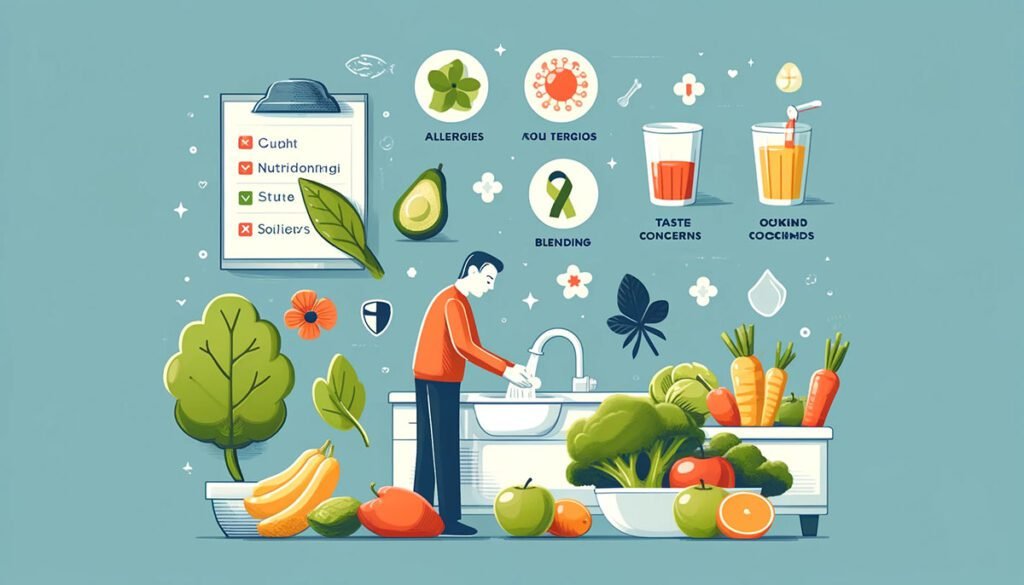- Introduction
- The Nutritional Profile of Fruit and Vegetable Peels
- Health Benefits of Consuming Peels
- Practical Tips for Incorporating Peels into Your Diet
- Environmental and Economic Benefits
- Common Concerns and How to Address Them
- Real-Life Success Stories
- Conclusion
- FAQ Section for wellhealthorganic.com Eat Your Peels Unlocking the Nutritional Benefits
Introduction
In today’s health-conscious society, a surprising trend is emerging: consuming the peels of fruits and vegetables. Many must realize that these often-discarded parts are packed with nutrients that can significantly boost their health. Eating peels may initially seem unappealing, but their benefits are substantial.
Recent studies and health experts highlight the importance of eating fruits and vegetables and utilizing their peels to maximize nutrient intake. This article explores the many advantages of incorporating peels into your diet, providing a thorough guide on accessing these nutritional benefits. By the end of this read, you will have the knowledge and practical tips to get the most out of your produce, improving your health and the environment. Welcome to “wellhealthorganic.com eat your peels unlocking the nutritional benefits.”
The Nutritional Profile of Fruit and Vegetable Peels


Overview of Nutrients
Fruit and vegetable peels are rich in vitamins, minerals, and antioxidants, often surpassing the nutritional value of the flesh. These nutrients are vital for maintaining good health and preventing chronic illnesses. Peels contain polyphenols and carotenoids, potent antioxidants that guard against oxidative stress and reduce inflammation.
Fiber Content
Peels are a great source of dietary fiber. Fiber is crucial for digestion, helping to ensure regular bowel movements and prevent constipation. It also aids in weight management by promoting satiety and lowering overall calorie intake. Additionally, fiber helps regulate blood sugar levels, which benefits people with diabetes.
Specific Examples
- Apple Peels: Rich in quercetin, an antioxidant with anti-inflammatory and antihistamine effects. High in fiber, they help lower cholesterol, contributing to heart health.
- Banana Peels: Loaded with potassium, essential for heart and muscle function. They also contain tryptophan, which improves mood and sleep.
- Orange Peels: Packed with vitamin C and flavonoids like tangerine and nobiletin, which have anticancer and antidiabetic properties. They also contain pectin, a fiber that supports digestion.
- Potato Peels: An excellent source of iron, potassium, and vitamin C, along with significant fiber, which aids digestion and supports a healthy gut microbiome.
By understanding the nutritional value of these peels, you can make informed choices about adding them to your diet for better health.
Health Benefits of Consuming Peels


Digestive Health
Eating fruit and vegetable peels can greatly improve digestion due to their high fiber content. Fiber adds bulk to stool, promoting regular bowel movements and preventing constipation. It also acts as a prebiotic, feeding beneficial gut bacteria and supporting a healthy microbiome. This can improve nutrient absorption and reduce gastrointestinal issues like irritable bowel syndrome (IBS).
Immune System Boost
Vitamins and antioxidants in peels boost the immune system. Orange peels, for example, are rich in vitamin C, an antioxidant that enhances immune function by stimulating white blood cell production. Polyphenols and carotenoids in various peels protect cells from oxidative damage, lowering the risk of chronic illnesses and infections.
Disease Prevention
Peels are packed with compounds that help prevent diseases. Flavonoids in apple and citrus peels inhibit cancer cell growth and prevent tumors. High in potassium, banana peels can help reduce blood pressure and improve heart health. Peel antioxidants also have anti-inflammatory properties, which can help manage arthritis and reduce the risk of chronic inflammation-related diseases.
Case Studies/Scientific Research
Research supports the health benefits of consuming peels. A Journal of Agricultural and Food Chemistry study found fruit peels have higher antioxidant concentrations than pulp. Another study highlighted citrus peels’ anti-inflammatory and anticancer effects due to their high flavonoid content. These findings emphasize the importance of not discarding peels and incorporating them into the diet to maximize health benefits.
By understanding and utilizing the health benefits of fruit and vegetable peels, individuals can enhance their overall well-being and reduce the risk of various health conditions.
Practical Tips for Incorporating Peels into Your Diet


Preparation Methods
Start by thoroughly cleaning the peels to remove dirt, pesticides, or wax. A vegetable brush and running water can effectively clean most peels. Soak the produce in water and vinegar for a few minutes for tougher residues. Opt for organic produce to minimize pesticide exposure.
Culinary Uses
Peels can be used in many culinary ways to enhance flavor and nutrition. Here are some ideas:
- Smoothies: To boost fiber content without significantly changing the taste, add small pieces of apple, pear, or banana peels. Ensure the peels are finely chopped or blended well.
- Salads: Citrus peels, such as orange and lemon zest, can add a refreshing flavor to salads. Thinly slice or grate the peels over your salad for a zesty kick.
- Baking: Incorporate grated carrot or zucchini peels into muffins, cakes, or bread. This increases fiber and keeps baked goods moist.
Recipes
- Crispy Potato Peels: Toss cleaned potato peels with olive oil, salt, and pepper. Bake at 400°F (200°C) for 15-20 minutes until crispy. These make a tasty and nutritious snack.
- Citrus Peel Candy: Boil orange or lemon peels in water for 10 minutes. Drain and repeat to remove bitterness. Simmer the peels in sugar syrup until translucent. Allow them to dry, then roll them in sugar for a sweet treat.
- Vegetable Peel Broth: Collect peels from carrots, potatoes, and onions. Boil them in water with herbs and spices to create a flavorful broth for soups and stews.
By incorporating these practical tips into your routine, you can easily add the nutritional benefits of peels to your diet, enhancing both health and culinary variety.
Environmental and Economic Benefits


Reducing Food Waste
Using fruit and vegetable peels can greatly reduce food waste. The Food and Agriculture Organization (FAO) states that about one-third of worldwide food is wasted. By eating peels that are usually discarded, we can significantly decrease the amount of food waste. This practice saves resources and lowers the environmental impact linked to food production, such as water use and greenhouse gas emissions.
Cost-Effective
Adding peels to your diet is also economically beneficial. Utilizing the entire fruit or vegetable provides more value for your money. Peels, often thrown away, are packed with nutrients. This makes them a budget-friendly way to boost your diet without buying extra supplements or fortified foods. This habit can extend your grocery budget and reduce the number of shopping trips, leading to more savings.
Sustainable Practices
Consuming peels supports broader sustainability efforts by promoting a zero-waste approach to food consumption. This aligns with sustainable living principles by encouraging the full use of food products and minimizing waste. Additionally, reducing food waste at the consumer level can inspire others to adopt similar habits and raise awareness about sustainable food practices.
By including peels in your diet, you not only improve your health but also contribute to a more sustainable and economically sound lifestyle. This small change can make a big difference in combating food waste and environmental damage.
Common Concerns and How to Address Them


Pesticides and Chemicals
A major concern about eating peels is the presence of pesticides and chemicals. To address this, it is crucial to wash and scrub fruits and vegetables thoroughly before eating peels. Using a mix of water and vinegar can help remove more pesticide residues. Organic produce can also reduce the risk, as it usually contains fewer synthetic chemicals.
Taste and Texture
Some people find the taste and texture of peels off-putting. To make them more palatable, peels can be blended into smoothies or finely grated into dishes where their texture is less noticeable. Cooking peels can also soften their texture and mellow flavor, making them more enjoyable. For example, adding citrus zest to recipes can provide a burst of flavor without the bitterness often associated with the peel.
Allergies and Sensitivities
Eating peels might be a concern for those with allergies or sensitivities. Introducing peels gradually into the diet and watching for any adverse reactions is important. People with specific allergies should consult a healthcare provider before adding peels to their meals. Additionally, be cautious with peels from fruits and vegetables that trigger allergies, such as bananas or citrus.
By addressing these common concerns, individuals can confidently add peels to their diet and enjoy the numerous nutritional benefits they offer. Proper preparation and gradual introduction can reduce potential issues and improve the overall eating experience.
Real-Life Success Stories
Testimonials
Many people have seen significant health improvements by adding fruit and vegetable peels to their diets. For instance, a nutrition enthusiast, Sarah, shares how adding apple and cucumber peels to her smoothies increased her fiber intake and improved her digestion. She noticed less bloating and more regular bowel movements after a few weeks.
Community Initiatives
Several community programs have also embraced eating peels to promote health and sustainability. A local initiative in Portland, Oregon, named “Peel Power,” encourages residents to reduce food waste by using peels in everyday cooking. The program offers workshops on preparing and cooking with peels, and participants have reported better health outcomes and a stronger sense of community.
Personal Stories
After reading about their benefits, John, a fitness coach, began adding citrus and banana peels to his diet. The extra nutrients helped him recover faster after workouts and boosted his overall energy levels. By sharing his journey on social media, John has inspired many followers to do the same, creating a ripple effect of healthier eating habits.
These real-life success stories show the tangible benefits of consuming peels and how this simple practice can improve health and well-being.
Conclusion
Including fruit and vegetable peels in your diet is a simple yet powerful way to enhance overall health and contribute to environmental sustainability. As we have explored, peels are rich in essential nutrients, fiber, and antioxidants that can boost your immune system, improve digestive health, and help prevent chronic diseases. Practical tips and delicious recipes make it easy to add these often-overlooked parts of produce to your meals, offering both culinary variety and nutritional benefits.
By adopting the practice of eating peels, you maximize the value of your food purchases and play a part in reducing food waste and promoting sustainable living. Start small, try different peels, and enjoy the journey towards better health and a greener planet. Remember, every peel you consume is a step towards a healthier and more sustainable world. So, take the plunge and unlock the full potential of your fruits and vegetables with “wellhealthorganic.com eat your peels unlocking the nutritional benefits.”
FAQ Section for wellhealthorganic.com Eat Your Peels Unlocking the Nutritional Benefits
1. Why should I consider eating fruit and vegetable peels?
Eating fruit and vegetable peels offers numerous health benefits. Peels are rich in vitamins, minerals, fiber, and antioxidants that can enhance your overall health. They help improve digestion, boost your immune system, and reduce the risk of chronic diseases. Additionally, peels minimize food waste, making it an environmentally friendly practice.
2. Are there any risks associated with eating peels?
The primary concern with consuming peels is the potential presence of pesticides and chemicals. To mitigate this risk, thoroughly wash and scrub fruits and vegetables before eating their peels. Using a mixture of water and vinegar can help remove pesticide residues. Opting for organic produce can also minimize exposure to harmful chemicals.
3. Which fruit and vegetable peels are safe to eat?
Most fruit and vegetable peels are safe to eat if properly cleaned. Commonly consumed peels include apples, bananas, oranges, potatoes, cucumbers, and carrots. However, some peels, like those from avocados or mangos, can be tough and less palatable. Always research specific peels and their safety before consumption.
4. How can I incorporate peels into my diet without compromising taste?
There are various ways to incorporate peels into your diet without significantly altering their taste. Adding finely chopped peels to smoothies, grating citrus zest over salads, or baking with grated carrot or zucchini peels are effective. Cooking peels can also soften their texture and reduce bitterness.
5. Do peels contain more nutrients than fruit or vegetable flesh?
Yes, peels often contain higher concentrations of certain nutrients than the flesh. For example, apple peels are rich in fiber and antioxidants like quercetin, while citrus peels have high levels of vitamin C and flavonoids. Eating the peel along with the flesh maximizes nutrient intake.
6. Can eating peels help with weight management?
Yes, the high fiber content in peels can aid in weight management. Fiber promotes a feeling of fullness, reducing overall calorie intake. It also helps regulate blood sugar levels, preventing overeating and cravings. Including peels in your diet can be an effective strategy for maintaining a healthy weight.
7. How do peels contribute to environmental sustainability?
Eating peels helps reduce food waste, which is a significant environmental issue. By utilizing all fruits or vegetables, less food is discarded, resources are conserved, and the ecological impact of food production is reduced. This practice aligns with sustainable living principles and promotes a zero-waste approach.
8. Are there any specific health conditions that benefit from eating peels?
Eating peels can benefit various health conditions due to their nutrient content. For example, the fiber in peels aids digestion and can help manage conditions like constipation and IBS. The antioxidants and vitamins in peels can support immune health and reduce inflammation, benefiting those with chronic inflammatory conditions.
9. How should I prepare peels to ensure they are safe to eat?
To prepare peels safely, thoroughly wash and scrub the fruit or vegetable under running water. A vegetable brush can help remove dirt and residues. Soaking the produce in water and vinegar can also be effective. Always use clean, organic produce when possible to minimize pesticide exposure.
10. Can children and elderly individuals safely consume peels?
Yes, children and elderly individuals can safely consume peels if they are properly prepared and introduced gradually. Ensure the peels are finely chopped or blended to prevent choking hazards. Monitor for any adverse reactions, especially if there are known allergies or sensitivities, and consult with a healthcare provider if necessary.
If you found our content helpful don’t forget to share it on your social media: Twitter.
For more insightful articles, please visit Bloghart.


Pingback: WellHealthOrganic.com: Eat Your Peels: Unlocking the Nutritional Benefits
Pingback: WellHealthOrganic.com: Eat Your Peels - Unlocking the Nutritional Benefits - Market Business Updates
Pingback: wellhealthorganic.com:eat your peels: unlocking the nutritional benefits
Pingback: Wellhealthorganic.com:eat your peels: unlocking the nutritional benefits -